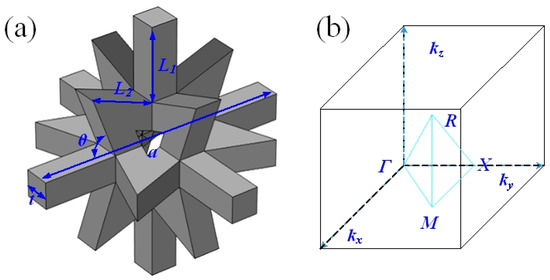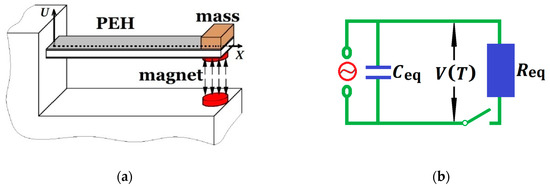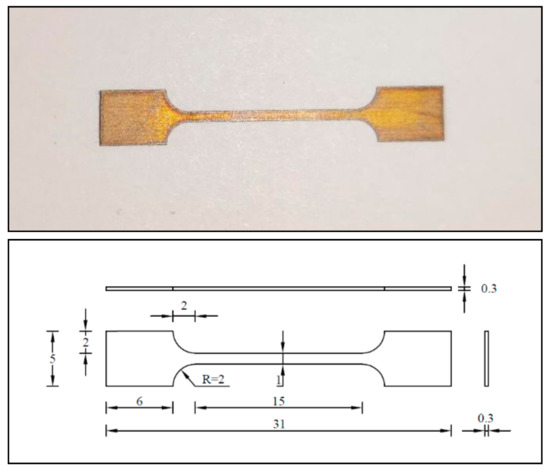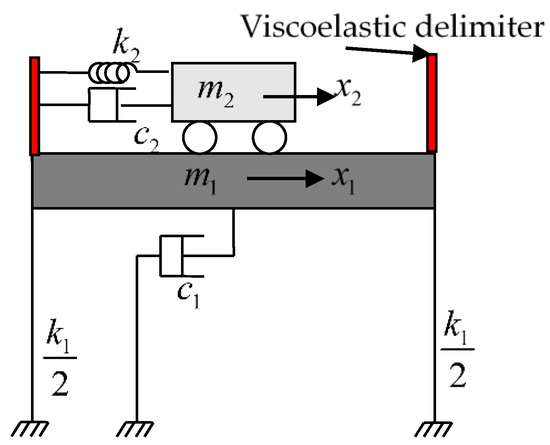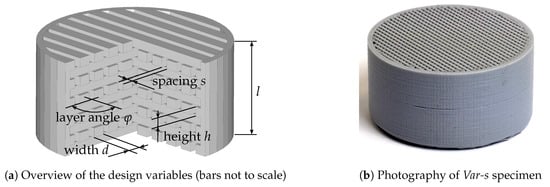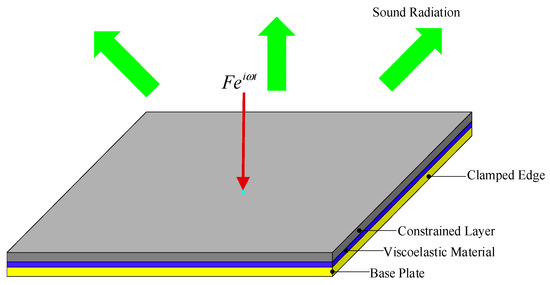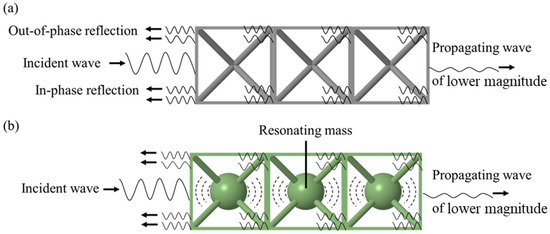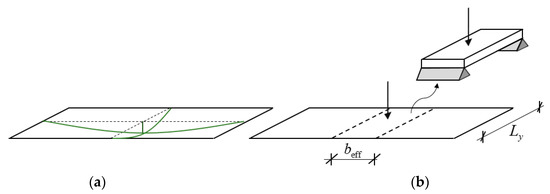Damping Materials
(Closed)
Share This Topical Collection
Editor
 Prof. Dr. Dimitrios Chronopoulos
Prof. Dr. Dimitrios Chronopoulos
 Prof. Dr. Dimitrios Chronopoulos
Prof. Dr. Dimitrios Chronopoulos
E-Mail
Website
Guest Editor
Department of Mechanical Engineering & Mecha(tro)nic System Dynamics (LMSD), KU Leuven, 9000 Leuven, Belgium
Interests: ultrasound metamaterials; metamaterials for structural health monitoring applications
Special Issues, Collections and Topics in MDPI journals
Topical Collection Information
Dear Colleagues,
Modern structures are increasingly made of lightweight materials due to the well-known social need for energy savings. Despite their superior structural characteristics, lightweight structures exhibit poor vibrational and acoustic isolation levels. Structural integrity and comfort are therefore compromised. In order to maintain comfort and safety levels within acceptable limits, additional damping is necessary in several contemporary applications. This Special Issue will bring together academic and industrial researchers leading the field of mass-efficient, high-damping materials and structures. The Special Issue will comprise high-quality manuscripts presenting a comprehensive range of cutting-edge technologies for damping enhancement strategies. Full papers, communications, as well as reviews are welcome.
Assoc. Prof. Dr. Dimitrios Chronopoulos
Guest Editor
Manuscript Submission Information
Manuscripts should be submitted online at www.mdpi.com by registering and logging in to this website. Once you are registered, click here to go to the submission form. Manuscripts can be submitted until the deadline. All submissions that pass pre-check are peer-reviewed. Accepted papers will be published continuously in the journal (as soon as accepted) and will be listed together on the collection website. Research articles, review articles as well as short communications are invited. For planned papers, a title and short abstract (about 100 words) can be sent to the Editorial Office for announcement on this website.
Submitted manuscripts should not have been published previously, nor be under consideration for publication elsewhere (except conference proceedings papers). All manuscripts are thoroughly refereed through a single-blind peer-review process. A guide for authors and other relevant information for submission of manuscripts is available on the Instructions for Authors page. Materials is an international peer-reviewed open access semimonthly journal published by MDPI.
Please visit the Instructions for Authors page before submitting a manuscript.
The Article Processing Charge (APC) for publication in this open access journal is 2600 CHF (Swiss Francs).
Submitted papers should be well formatted and use good English. Authors may use MDPI's
English editing service prior to publication or during author revisions.
Keywords
- Damping materials
- Smart and adaptable structures
- Metamaterials and metastructures
- Composite structures
- Mass-efficient vibroacoustic attenuation
Published Papers (10 papers)
Open AccessArticle
Investigation of 2D Rainbow Metamaterials for Broadband Vibration Attenuation
by
Han Meng, Dimitrios Chronopoulos, Nick Bailey and Lei Wang
Cited by 18 | Viewed by 3196
Abstract
Phononic crystals (PnCs) and metamaterials are widely investigated for vibration suppression owing to the bandgaps, within which, wave propagation is prohibited or the attenuation level is above requirements. The application of PnCs and metamaterials is, however, limited by the widths of bandgaps. The
[...] Read more.
Phononic crystals (PnCs) and metamaterials are widely investigated for vibration suppression owing to the bandgaps, within which, wave propagation is prohibited or the attenuation level is above requirements. The application of PnCs and metamaterials is, however, limited by the widths of bandgaps. The recently developed rainbow structures consisting of spatially varied profiles have been shown to generate wider bandgaps than periodic structures. Inspired by this design strategy, rainbow metamaterials composed of nonperiodic mass blocks in two-dimensional (2D) space were proposed in the present study. The blocks were connected by curved beams and tessellated with internal voids to adjust their masses. In order to demonstrate the effects of the rainbow design, two 2D metamaterials, with periodic and nonperiodic units, respectively, were investigated and manufactured using additive manufacturing technologies. Receptance functions, i.e., displacement frequency response functions, of the manufactured metamaterials were calculated with finite element models and measured with a testing system containing a mechanical shaker, an impedance head, and a laser Doppler vibrometer. The obtained numerical and experimental results showed that the metamaterial with rainbow blocks has extended bandgaps compared with the periodic metamaterial.
Full article
►▼
Show Figures
Open AccessArticle
Band Gaps and Vibration Isolation of a Three-dimensional Metamaterial with a Star Structure
by
Heng Jiang, Mangong Zhang, Yu Liu, Dongliang Pei, Meng Chen and Yuren Wang
Cited by 38 | Viewed by 4248
Abstract
Elastic metamaterials have promising applications in wave control and vibration isolation, due to their extraordinary characteristics, e.g., negative Poisson ratio, band gaps, effective negative mass density and effective negative modulus. How to develop new functional metamaterials using a special structure has always been
[...] Read more.
Elastic metamaterials have promising applications in wave control and vibration isolation, due to their extraordinary characteristics, e.g., negative Poisson ratio, band gaps, effective negative mass density and effective negative modulus. How to develop new functional metamaterials using a special structure has always been a hot topic in this field. In this study, a three-dimensional (3D) star structure is designed to construct metamaterials with both negative static and dynamic properties. The results show that the 3D star structure formed a wide band gap at lower frequency and had a negative Poisson’s ratio. Different from conventional acoustic metamaterials, the main physical mechanism behind the low-frequency band gap of the 3D star structure is the resonance mode formed by the bending deformation of each rib plate, which made it easier to achieve effective isolation of low-frequency elastic waves with a low mass density. In addition, many structural parameters of the 3D star structure can be modulated to effectively adjust the band gap frequency by changing the angle between the concave nodes and aspect ratio. This study provides a new way to design the 3D acoustic metamaterials and develop the lightweight vibration isolation devices.
Full article
►▼
Show Figures
Open AccessArticle
Secondary Resonance Energy Harvesting with Quadratic Nonlinearity
by
Guoce Zhang and Bo Zhang
Cited by 5 | Viewed by 2690
Abstract
Piezoelectric energy harvesters can transform the mechanical strain into electrical energy. The microelectromechanical transformation device is often composed of piezoelectric cantilevers and has been largely experimented. Most resonances have been developed to harvest nonlinear vibratory energy except for combination resonances. This paper is
[...] Read more.
Piezoelectric energy harvesters can transform the mechanical strain into electrical energy. The microelectromechanical transformation device is often composed of piezoelectric cantilevers and has been largely experimented. Most resonances have been developed to harvest nonlinear vibratory energy except for combination resonances. This paper is to analyze several secondary resonances of a cantilever-type piezoelectric energy harvester with a tip magnet. The conventional Galerkin method is improved to truncate the continuous model, an integro-partial differential equation with time-dependent boundary conditions. Then, more resonances on higher-order vibration modes can be obtained. The stable steady-state response is formulated approximately but analytically for the first two subharmonic and combination resonances. The instability boundaries are discussed for these secondary resonances from quadratic nonlinearity. A small damping and a large excitation readily result in an unstable response, including the period-doubling and quasiperiodic motions that can be employed to enhance the voltage output around a wider band of working frequency. Runge–Kutta method is employed to numerically compute the time history for stable and unstable motions. The stable steady-state responses from two different methods agree well with each other. The outcome enriches structural dynamic theory on nonlinear vibration.
Full article
►▼
Show Figures
Open AccessArticle
Experimental Study on Temperature Effects on NiTi Shape Memory Alloys under Fatigue Loading
by
Caikui Lin, Zeqiang Wang, Xin Yang and Haijun Zhou
Cited by 18 | Viewed by 3231
Abstract
NiTi Shape Memory Alloy (SMA) has been widely studied in the field of structural vibration control, and the results show that the fatigue life of the SMA is a key factor of the vibration control system. In this paper, the fatigue test is
[...] Read more.
NiTi Shape Memory Alloy (SMA) has been widely studied in the field of structural vibration control, and the results show that the fatigue life of the SMA is a key factor of the vibration control system. In this paper, the fatigue test is carried out in Dynamic Mechanical Analyzer (DMA + 1000) to analyze how the changes of temperature and strain amplitude affecting the main fatigue parameters. The test results show that when the test temperature is higher than Austenite finish temperature (
Af), the fatigue properties of SMAs are significantly affected by temperature. With the increase of temperature, the fatigue life becomes shorter and the energy consumption decreases, while the area of hysteresis curve, the stress amplitude, and effective modulus increase.
Full article
►▼
Show Figures
Open AccessArticle
Low Temperature Influence on the Behavior of Viscoelastic Layer of the Pounding Tuned Mass Damper
by
Peng Zhang, Jinwei Jiang and Guangtao Lu
Cited by 6 | Viewed by 2919
Abstract
In previous studies, the pounding tuned mass damper (PTMD) has been successfully demonstrated to mitigate the undesired vibration of a variety of structures at room temperature. The advantages of the PTMD over the traditional tuned mass damper (TMD) has been verified through theoretical
[...] Read more.
In previous studies, the pounding tuned mass damper (PTMD) has been successfully demonstrated to mitigate the undesired vibration of a variety of structures at room temperature. The advantages of the PTMD over the traditional tuned mass damper (TMD) has been verified through theoretical analysis and experimental investigations. However, the PTMD relies on an impact layer made of viscoelastic material to improve its vibration control performance and robustness against detuning effect. The energy dissipation of the viscoelastic material can be affected by the changes of environmental temperature. Therefore, this paper aims to study the impact damping behavior of the viscoelastic material in the low temperature environment of the sea bed where the PTMD is expected to control vibrations of subsea pipelines. The experimental apparatus fabricated in the previous study to generate and measure the lateral impact was housed inside a refrigerator. The experimental results indicate that the pounding stiffness decreased whereas the energy dissipation increased in the low temperature environment. Moreover, an impact fatigue test was also performed in the low temperature environment and compared with the room temperature case. Experimental results from a previous study show that the viscoelastic material was damaged after 36,000 cycles of impacts in the room temperature and a cyclic hardening–softening process was observed. However, in the low temperature environment, the viscoelastic material was damaged after 50,000 cycles of impacts and the cyclic hardening–softening process was not observed. As the impact cycle grew, the pounding stiffness decreased from 53,000 N/m
1.5 to 17,000 N/m
1.5 and the energy dissipation increased from 46.12 J/m per cycle to 65.4 J/m per cycle.
Full article
►▼
Show Figures
Open AccessArticle
Design, Experimental and Numerical Characterization of 3D-Printed Porous Absorbers
by
Tobias P. Ring and Sabine C. Langer
Cited by 12 | Viewed by 4027
Abstract
The application of porous materials is a common measure for noise mitigation and in room acoustics. The prediction of the acoustic behavior applies material models, among which most are based on the
Biot-parameters. Thereby, it is expected that, if more
Biot-parameters
[...] Read more.
The application of porous materials is a common measure for noise mitigation and in room acoustics. The prediction of the acoustic behavior applies material models, among which most are based on the
Biot-parameters. Thereby, it is expected that, if more
Biot-parameters are used, a better prediction can be obtained. Nevertheless, an estimation of the
Biot-parameters from the geometric design of the material is possible for simple structures only. For common porous materials, the microstructure is typically unknown and characterized by homogenized quantities. This contribution introduces a methodology that enables the design and optimization of porous materials based on the
Biot-parameters and connects these to microscopic geometric quantities. Therefore, artificial porous materials were manufactured using 3D-printing technology with a prescribed geometric design and the influence of different design variables was investigated. The
Biot-parameters were identified with an inverse procedure and it can be shown that different
Biot-parameters can be influenced by adjusting the geometric design variables. Based on these findings, a one-parameter optimization procedure of the material is set up to maximize the absorption characteristics in the frequency range of interest.
Full article
►▼
Show Figures
Open AccessArticle
Sound Radiation Analysis of Constrained Layer Damping Structures Based on Two-Level Optimization
by
Dongdong Zhang, Yonghui Wu, Jingyue Chen, Shuwen Wang and Ling Zheng
Cited by 9 | Viewed by 3213
Abstract
Constrained layer damping (CLD) is an effective method for suppressing the vibration and sound radiation of lightweight structures. In this article, a two-level optimization approach is presented as a systematic methodology to design position layouts and thickness configurations of CLD materials for suppressing
[...] Read more.
Constrained layer damping (CLD) is an effective method for suppressing the vibration and sound radiation of lightweight structures. In this article, a two-level optimization approach is presented as a systematic methodology to design position layouts and thickness configurations of CLD materials for suppressing the sound power of vibrating structures. A two-level optimization model for the CLD structure is developed, considering sound radiation power as the objective function and different additional mass fractions as constraints. The proposed approach applies a modified bi-directional evolutionary structural optimization (BESO) method to obtain several optimal position layouts of CLD materials pasted on the base structure, and sound power sensitivity analysis is formulated based on sound radiation modes for the position optimization of CLD materials. Two strategies based on the distributions of average normalized elemental kinetic energy and strain energy of the base plate are proposed to divide optimal position layouts of CLD materials into several subareas, and a genetic algorithm (GA) is employed to optimally reconfigure the thicknesses of CLD materials in the subareas. Numerical examples are provided to illustrate the validity and efficiency of this approach. The sound radiation power radiated from the vibrating plate, which is treated with multiple position layouts and thickness reconfigurations of CLD materials, is emphatically discussed.
Full article
►▼
Show Figures
Open AccessArticle
Damping Enhancement Using Axially Functionally Graded Porous Structure Based on Acoustic Black Hole Effect
by
Weiguang Zheng, Shiming He, Rongjiang Tang and Shuilong He
Cited by 15 | Viewed by 3822
Abstract
The acoustic black hole (ABH) effect for damping flexural waves using axially functionally graded porous (FGP) structure is investigated. With proposed power-law porosity of FGP structure, ABH can be achieved and damping effect is enhanced. The physics are explained from divergent conditions of
[...] Read more.
The acoustic black hole (ABH) effect for damping flexural waves using axially functionally graded porous (FGP) structure is investigated. With proposed power-law porosity of FGP structure, ABH can be achieved and damping effect is enhanced. The physics are explained from divergent conditions of the integrated wave phase at composite ends. Numerical results show the damping effect is increased with power law index. The phenomenon is expounded by the characteristics of reflection coefficient and impedance. It indicates that increasing power law index leads to smaller wavelength along to the end, then the wave needs more oscillation cycles to travel, which leads to more energy absorption. Transient analysis for 2D FGP structure also shows the focalization and ABH effect of the flexural waves.
Full article
►▼
Show Figures
Open AccessArticle
Multidimensional Phononic Bandgaps in Three-Dimensional Lattices for Additive Manufacturing
by
Waiel Elmadih, Wahyudin P. Syam, Ian Maskery, Dimitrios Chronopoulos and Richard Leach
Cited by 14 | Viewed by 4581
Abstract
We report on numerical modelling of three-dimensional lattice structures designed to provide phononic bandgaps. The examined lattice structures rely on two distinct mechanisms for bandgap formation: the destructive interference of elastic waves and internal resonance. Further to the effect of lattice type on
[...] Read more.
We report on numerical modelling of three-dimensional lattice structures designed to provide phononic bandgaps. The examined lattice structures rely on two distinct mechanisms for bandgap formation: the destructive interference of elastic waves and internal resonance. Further to the effect of lattice type on the development of phononic bandgaps, we also present the effect of volume fraction, which enables the designer to control the frequency range over which the bandgaps exist. The bandgaps were identified from dispersion curves obtained using a finite element wave propagation modelling technique that provides high computational efficiency and high wave modelling accuracy. We show that lattice structures employing internal resonance can provide transmissibility reduction of longitudinal waves of up to −103 dB. Paired with the manufacturing freedom and material choice of additive manufacturing, the examined lattice structures can be tailored for use in wide-ranging applications including machine design, isolation and support platforms, metrology frames, aerospace and automobile applications, and biomedical devices.
Full article
►▼
Show Figures
Open AccessArticle
Dynamic Response of Long Rectangular Floors Subjected to Periodic Force Excitation
by
Zsuzsa B. Pap and László P. Kollár
Cited by 4 | Viewed by 2875
Abstract
Since damping in lightweight floors is usually low, dynamic amplification can be rather high. Long rectangular plates subjected to concentrated loads are often investigated by a replacement beam with a so called “effective width”. Although this approach is a reliable tool for static
[...] Read more.
Since damping in lightweight floors is usually low, dynamic amplification can be rather high. Long rectangular plates subjected to concentrated loads are often investigated by a replacement beam with a so called “effective width”. Although this approach is a reliable tool for static loads, the steady-state dynamic response of beams and long plates subjected to periodic loads are significantly different. The maximum displacements and accelerations of beams (and of not-long rectangular plates) are obtained by using a dynamic amplification factor, which in the case of resonance is equal to
1/2ξ , where
ξ is the damping ratio. For long plates (and for not-long orthotropic rib-stiffened plates), as discussed in the paper, the response and the amplification factor are substantially different from those of beams. Hence, design based on effective width may lead to 2–4 times higher acceleration than the real values. In an economic design, to avoid unnecessary damping enhancement, this effect must be taken into account.
Full article
►▼
Show Figures







